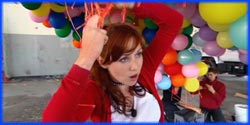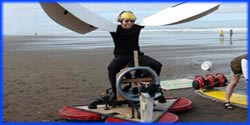


Premier Date: May 15, 2013
confirmed
In a preliminary test, Adam and Jamie found that washing their hands properly with soap did not leave behind enough bacteria for them to count, so in the remaining tests, participants only used water to wash their hands.
Sixteen volunteers were enlisted to have their hands sprayed with a harmless strain of E. coli bacteria. The volunteers’ hands were then swabbed for a sample, then washed using water but no soap, then swabbed again, then dried using paper towels, then swabbed a third time. Next, the entire process was repeated with the same volunteers, but using hand dryers instead of paper towels. On average, the paper towels removed 71% of the bacteria on the volunteers’ hands, while the hand dryers only removed 23%, confirming that the myth is true for individuals.
Adam and Jamie also wanted to find out how clean the drying area of the restroom stayed with each drying method. Before the previous experiment began, the mock restrooms were thoroughly cleaned. After the experiment, swabs from the paper towel area yielded 3 bacteria colonies while swabs from the hand dryer area yielded 41 colonies, confirming that the myth is also true in regards to the cleanliness of the restroom.
confirmed
In preparation of the experiment, a restroom with four stalls was thoroughly sanitized. The stalls were numbered in order of closest to the entrance (as 1) to farthest (as 4) and mechanical counters were attached to the stall doors to keep track of how many times each stall was used. After a total of 119 men used the restroom, Adam and Jamie swabbed each of the stalls and counted the number of colonies of bacteria produced in a culture. The results were as follows:
| Stall | Uses | Bacteria |
|---|---|---|
| 1 | 23 people | 162 colonies |
| 2 | 38 people | 267 colonies |
| 3 | 34 people | 290 colonies |
| 4 | 24 people | 231 colonies |
busted
The Build Team constructed a shaking table measuring a 13×11 feet (4.0×3.4 meters). Pneumatic valve springs and air casters were used to bounce and push the table, simulating an earthquake.
For the first test, a small masonry house was built on top of the table. They placed mannequins in three locations inside the house: one standing in the open, one lying under a table, and one standing in the doorway. When they shook the table, the masonry house cracked and collapsed, but the wall with the doorway remained standing. The mannequins standing in the room and lying under the table suffered, but the one in the doorway was subject only to being hit by the swinging door.
For a second test, the house was rebuilt with a wooden frame following modern construction codes. After simulating a magnitude 9.5 earthquake, the house remained intact but the mannequin in the doorway fell over, leaving the mannequin under the table in the safest position. Despite the doorway proving to be the best spot in the masonry house, the Build Team declared the myth busted due to the rarity of such houses and the current advice from the U.S. Geological Survey, which is “drop, cover, and hold on.”